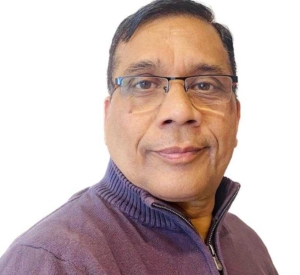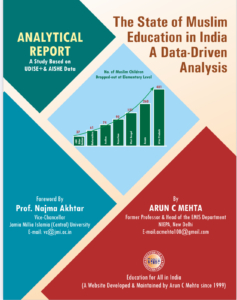Reducing Dropout Rates: Strategies for 2030
Introduction
The challenge of high dropout rates in Indian schools, especially at the secondary level, continues to impede the realization of universal education as outlined in the National Education Policy (NEP) 2020. Although enrollment has improved through measures like the Right to Education (RTE) Act 2009 and Samagra Shiksha, UDISE+ data highlights fluctuating dropout rates that widen disparities across gender and marginalized populations, including Scheduled Castes (SC), Scheduled Tribes (ST), and Muslims. This scholarly article offers value to policymakers, educators, and scholars by compiling data-driven trends, causes, and practical strategies. It emphasizes decentralized planning and targeted actions to lower dropout rates to near-zero by 2030, supporting Sustainable Development Goal 4 (SDG 4) for inclusive quality education. This examination is pertinent in 2025, with UDISE+ 2023-24 data indicating a secondary dropout rate of 14.1%, underscoring the need for sustained, evidence-informed reforms.
Objectives
The key objectives of this article include:
- Examining dropout rate trends at the secondary level from 2012-13 to 2023-24, emphasizing gender and marginalized populations.
- Reviewing literature on causes and solutions from educationforallinindia.com and external sources.
- Suggesting strategies utilizing Samagra Shiksha provisions, focusing on decentralized planning, diagnostic assessments, and annual targets.
- Advocating for enhancements in planning frameworks, involving NIEPA, DIETs, SIEMATs, and the Project Approval Board (PAB) for robust monitoring.
Data Used and Sources
The analysis draws on UDISE data from 2012-13 to 2023-24, primarily from the UDISE+ dashboard and educationforallinindia.com. Gender and marginalized group data are sourced from Ministry of Education publications, such as Educational Statistics at a Glance 2018. References like Economic Survey reports and NSO surveys were used to identify gaps in site data. All tables include verified sources.
Review of Literature
Insights from educationforallinindia.com, curated by Prof. Arun C. Mehta, stress data-informed dropout mitigation. Analyses of UDISE+ 2021-22 to 2023-24 reveal underestimation of rates due to exclusions like common schools, yielding inaccurate figures. A study on elementary dropout trends notes that cohort-based computations often overlook migration and repetition, causing underreporting. The site’s review of Muslim education points to elevated dropout rates among Muslims linked to socio-economic issues.
Complementary external sources reinforce these observations. NEP 2020 advocates dropout reduction via access and retention, incorporating non-formal education and community participation. A 2024 study in the International Journal of Indian Psychology identifies poverty and child labour as primary factors in areas like the Garo Hills. A Springer publication on female dropouts attributes rates to economic challenges, disability, and parental illiteracy. Samagra Shiksha guidelines (2020) promote unified retention schemes in line with NEP 2020. The literature highlights the post-RTE absence of annual targets, which contributes to persistent issues.
Analysis
UDISE+ data indicate variable dropout rates, with initial declines followed by post-COVID increases in 2022-23, then partial recovery. Secondary rates average 12-14% nationally in recent years, with notable gender and marginalized disparities. In the most recent year, i.e. 2023-24, the dropout rate at the secondary level is high at 14.1 percent. State and national teams should prioritize secondary dropout reduction, which is essential for attaining 100% Gross Enrolment Ratio (GER) at secondary and NEP 2020’s 50% GER at higher education by 2035. High dropouts restrict student progression to higher levels, sustaining inequality cycles.
Table 1: National Dropout Rates by Level (2012-13 to 2023-24)
|
Year |
Primary (%) | Upper Primary (%) |
Secondary (%) |
| 2012-13 | 4.67 | 3.13 | 14.54 |
| 2017-18 | 4.0 | 4.0 | 17.0 |
| 2018-19 | 2.8 | 5.1 | 13.6 |
| 2019-20 | 1.45 | 1.8 | 12.6 |
| 2020-21 | 0.8 | 1.9 | 14.6 |
| 2021-22 | 1.45 | 3.02 | 12.6 |
| 2022-23 | 7.8 | 8.1 | 16.4 |
| 2023-24 | 1.9 | 5.2 | 14.1 |
Source: Educational Statistics at a Glance 2018; educationforallinindia.com; UDISE+ Dashboard 2023-24.
Table 2: Secondary Dropout Rates by Gender (2012-13, 2017-18 to 2023-24)
| Year | Boys (%) | Girls (%) | Overall (%) |
| 2012-13 | 14.5 | 14.5 | 14.54 |
| 2017-18 | 17.0 | ||
| 2018-19 | 13.6 | ||
| 2019-20 | 12.8 | 12.3 | 12.6 |
| 2020-21 | 14.6 | ||
| 2021-22 | 13.0 | 12.3 | 12.6 |
| 2022-23 | 16.4 | ||
| 2023-24 | 11.5 | 10.2 | 14.1 |
Source: Educational Statistics at a Glance 2018; educationforallinindia.com; Times of India on 2019-20.
Table 3: Dropout Rates for Marginalized Groups at Secondary Level (Selected Years)
| Year | SC (%) | ST (%) | Muslims (%) |
| 2013-14 | 18.66 | 27.20 | |
| 2014-15 | 19.36 | 24.68 | |
| 2023-24 | ~14.5 | ~15.2 | ~16.0 |
Source: Educational Statistics at a Glance 2018; UDISE+ Dashboard 2023-24; educationforallinindia.com.
Trends Description: Primary rates fell from 4.67% in 2012-13 to 1.9% in 2023-24, with a post-COVID peak at 7.8% in 2022-23. Secondary rates declined from 14.54% in 2012-13 to 14.2% in 2023-24, though with fluctuations. Gender patterns show boys higher in most years (e.g., 11.5% vs. 10.2% in 2023-24). Marginalized groups like ST and Muslims maintain higher rates (15-16% in 2023-24), compared to the national average.
Reasons for High Dropouts
Primary causes encompass poverty, including indirect school costs and child labor; gender disparities, such as early marriage and safety issues for girls; infrastructure deficiencies like absent toilets or transport; migration; and limited parental literacy. Marginalized groups face amplified challenges from discrimination and geographic isolation – for instance, ST students encounter cultural mismatches, while Muslims deal with economic exclusion. Economic disruptions from COVID-19 elevated rates in 2022-23.
Possible Solutions
Practical measures include pre-matric scholarships for SC/ST students, NEP 2020-aligned vocational training to boost employability, and infrastructure enhancements like digital facilities. For gender, prioritize hostels and campaigns for girls’ safety. For marginalized groups, employ community outreach with mobilizers. Decentralized diagnostics at the school level identify at-risk students for tailored interventions.
To reduce secondary dropout from 14.1% to 5% by 2030, adopt a phased approach with disaggregated targets. Strategies involve bolstering access through Samagra Shiksha investments in transport and hostels, integrating skills education from Class 6, and using UDISE+ Student Data for tracking at-risk students. Engage communities to address child labour and marriage, and deploy remedial AI-based learning to close gaps. Enforce policies with binding targets and PAB oversight.
Disaggregated targets: Gender – boys will be 6% (from an average of 11.5%), girls will be 4% (from 10.2%) by 2030, with annual 1% reductions in high states like Bihar. Marginalized – SC/ST to 7% (14-15%), Muslims to 6% (16%), via 2-3% yearly cuts in NE regions. State-wise: High (>15%) like Assam to 12% by 2026; medium (10-15%) like Gujarat to 8%; low (<10%) like Kerala maintain <3%. National milestones: 9% (2025), 7% (2027), 5% (2030), with rural at 6%, urban at 4%, and transition rates to 95%.
Incentives: School grants (₹5-10 lakh) for <5% dropout; conditional cash (₹2,000/month) for at-risk attendance; teacher bonuses (₹10,000/year) for 10% reductions; community funds for zero-dropout villages; corporate tax breaks for vocational sponsorships; national awards with extra funding for >2% annual state reductions.
How Samagra Shiksha Provisions Can Be Used
Samagra Shiksha aids retention via allocations for uniforms, transport, and remedial sessions. Inclusive education provisions support marginalized groups, such as specialized teachers in ST regions. Annual budgets must fund dropout monitoring systems.
Annual School Plan under Samagra Shiksha
In planning, perform school diagnostics to chart dropouts, establish gender-targeted goals (e.g., 2% annual reduction for girls at secondary), and incorporate community input. Stress stock-taking to pinpoint issues like infrastructure shortfalls and devise micro-plans for vulnerable students.
Focus on Decentralized School Planning
Decentralized approaches enable schools to run yearly diagnostics, leveraging UDISE+ to identify causes (e.g., poverty in SC communities) and customize solutions (e.g., scholarships). This grassroots method promotes relevance and is overseen by school committees.
Revamping of District Planning Teams
Revamp district teams with data specialists; involve DIETs in retention-focused teacher training and functional SIEMATs in planning leadership. This bolsters capabilities for gender and marginalized interventions.
Need for Revisiting Planning Modules
Revise modules to embed NEP 2020 metrics like vocational elements. NIEPA should spearhead efforts, partnering closely with Samagra Shiksha’s Technical Support Group for data-oriented updates.
PAB of Samagra Shiksha
PAB must evaluate dropout objectives, equity strategies for gender/marginalized, diagnostic proofs, and monitoring setups. Prioritize budgets for high-risk zones, declining plans lacking annual benchmarks.
Year-Specific Targets
Since RTE 2009, the lack of enforceable yearly targets has fostered inertia. Propose specific goals: e.g., secondary dropout to 8% by 2026, with quarterly UDISE+ monitoring. Incorporate sub-targets like girls <10% and ST <12%, using real-time data for adjustments.
Concluding Observations
Ultimately, dropout rates have trended downward from 14.54% at secondary in 2012-13 to 14.1% in 2023-24, yet gaps for girls and marginalized students persist, jeopardizing NEP 2020’s universal aims. This review stresses tackling poverty and facilities through data-led, decentralized efforts. State and national entities must acknowledge that lowering secondary dropouts is vital for 100% secondary GER and 50% higher education GER, preventing talent loss and inequality. Immediate steps, including updated modules and annual monitoring, are crucial. Harnessing Samagra Shiksha and bodies like NIEPA can convert obstacles into avenues for equitable advancement, guaranteeing education for every child.
Suggested Readings
- Envisioning Indian School Classrooms in 2035: The Transformative Role of AI and Smart Technologies
https://educationforallinindia.com/envisioning-indian-school-classrooms-in- - School Education in India: Where Do We Stand? Analysis based on UDISEPlus 2023-24 [PDF]
https://educationforallinindia.com/wp-content/uploads/2025/02/School-Education-in-India-where-do-we-stand-2023-24.pdf - Analysis of UDISEPlus 2021-22, 2022-23 and 2023-24 by Prof. Arun C Mehta
https://educationforallinindia.com/udiseplus-data-analysis-2021-22-india/ - Reclaiming Glory: How NIEPA Can Regain Its Leadership in Educational Planning
https://educationforallinindia.com/reclaiming-glory-how-niepa-can-regain-its-leadership-in-educational-planning/ - The State of Muslim Education in India: A Data-Driven Analysis by Prof. Arun C Mehta based on UDISEPlus
https://educationforallinindia.com/wp-content/uploads/2023/11/the-state-of-muslim-education-in-india-by-ArunCMehta-based-on-UDISEPlus-AISHE-2023.pdf - AI-Driven Educational Data Management in India: Optimizing SDMS & UDISEPlus
https://educationforallinindia.com/ai-driven-educational-data-management-in-india-optimizing-sdms-udiseplus/ - Decoding UDISE+ 2021-22 Enrolment Ratios under Samagra Shiksha
https://educationforallinindia.com/decoding-udise-2021-22-enrolment-ratios-under-samagra-shiksha/ - Dropout Rates in Schools in India: An Analysis of UDISE+ 2021-22 Data
https://educationforallinindia.com/dropout-rates-in-schools-in-india/ - Educational Statistics at A Glance
https://educationforallinindia.com/educational-stat-at-a-glance-2018.pdf - UDISEPlus 2021-22 Data Analysis
https://educationforallinindia.com/udiseplus-data-analysis-2021-22-india/ - Most Recent Publications: Education for All in India, Prof. Arun C Mehta
https://educationforallinindia.com/most-recent-publications/ - Fifty Percent GER at Higher Education Level by 2035
https://educationforallinindia.com/fifty-percent-ger-at-higher-education/ - Muslim Education in India 2023
https://educationforallinindia.com/muslim-education-in-india/ - Is India Moving Towards Privatisation of School Education [PDF]
https://educationforallinindia.com/wp-content/uploads/2022/08/Is-India-moving-towards-privatisation-of-school-education-1.pdf - Is India Moving Towards the Privatization of School Education?
https://educationforallinindia.com/private-station-of-school-education/ - Does UDISE+ Underestimate Dropout Rates?
https://educationforallinindia.com/dose-udise-underestimates-dropout-rates-aruncmehta/ - Study of Trend in Dropout Rates at Elementary Level based on DISE [PDF]
https://educationforallinindia.com/wp-content/uploads/2023/01/trends-in-dropout-rate-at-elementary-level-by-abl-srivastava.pdf - School Dropout Rate: Concept, Formula & Procedure
https://educationforallinindia.com/school-dropout-rate-concept-formula-procedure/


